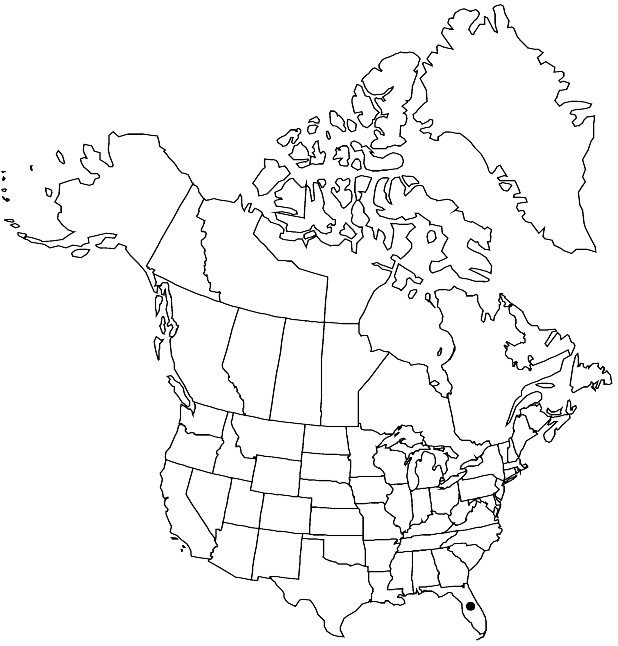Difference between revisions of "Warea carteri"
Bull. Torrey Bot. Club 36: 159. 1909.
FNA>Volume Importer |
FNA>Volume Importer |
||
| Line 23: | Line 23: | ||
|elevation=0-50 m | |elevation=0-50 m | ||
|distribution=Fla. | |distribution=Fla. | ||
| − | |discussion=<p>Warea carteri is known from Brevard, Glades, Highlands, Miami-Dade, and Polk counties. It is in the Center for Plant Conservation’s National Collection of Endangered Plants.</p> | + | |discussion=<p><i>Warea carteri</i> is known from Brevard, Glades, Highlands, Miami-Dade, and Polk counties. It is in the Center for Plant Conservation’s National Collection of Endangered Plants.</p> |
|tables= | |tables= | ||
|references= | |references= | ||
| Line 47: | Line 47: | ||
|publication year=1909 | |publication year=1909 | ||
|special status= | |special status= | ||
| − | |source xml=https://jpend@bitbucket.org/aafc-mbb/fna-data-curation.git/src/ | + | |source xml=https://jpend@bitbucket.org/aafc-mbb/fna-data-curation.git/src/8f726806613d60c220dc4493de13607dd3150896/coarse_grained_fna_xml/V7/V7_1306.xml |
|tribe=Brassicaceae tribe Thelypodieae | |tribe=Brassicaceae tribe Thelypodieae | ||
|genus=Warea | |genus=Warea | ||
Revision as of 17:55, 18 September 2019
Stems (4–)5–14 dm. Cauline leaves petiolate (petiole 0.1–0.8 cm proximally, obsolete distally); blade usually linear-oblanceolate to oblanceolate or narrowly oblong, rarely linear, 1–4.5 cm × 1–6(–10) mm, base cuneate to attenuate, apex obtuse to subapiculate. Racemes 0.4–3(–4) cm in fruit. Fruiting pedicels 4–10 mm. Flowers: sepals white, spreading or reflexed, 3–5 × 0.3–0.5 mm; petals white, broadly obovate to suborbicular, 4–6 mm, blade 2–3 × 2–3 mm, claw 2–3 mm, coarsely papillate to pubescent, margins crisped; filaments 5–7 mm; anthers 1–1.5 mm; gynophore slender, 3–6(–7) mm. Fruits 3–5(–6) cm × 1–1.5 mm; ovules 22–34 per ovary; style rarely to 0.5 mm. Seeds 1.2–1.8 × 0.8–1 mm. 2n = 24.
Phenology: Flowering late Sep–Jan; fruiting Oct-late Jan.
Habitat: Sandy areas in open scrub oak, sand scrub
Elevation: 0-50 m
Discussion
Warea carteri is known from Brevard, Glades, Highlands, Miami-Dade, and Polk counties. It is in the Center for Plant Conservation’s National Collection of Endangered Plants.
Selected References
None.
